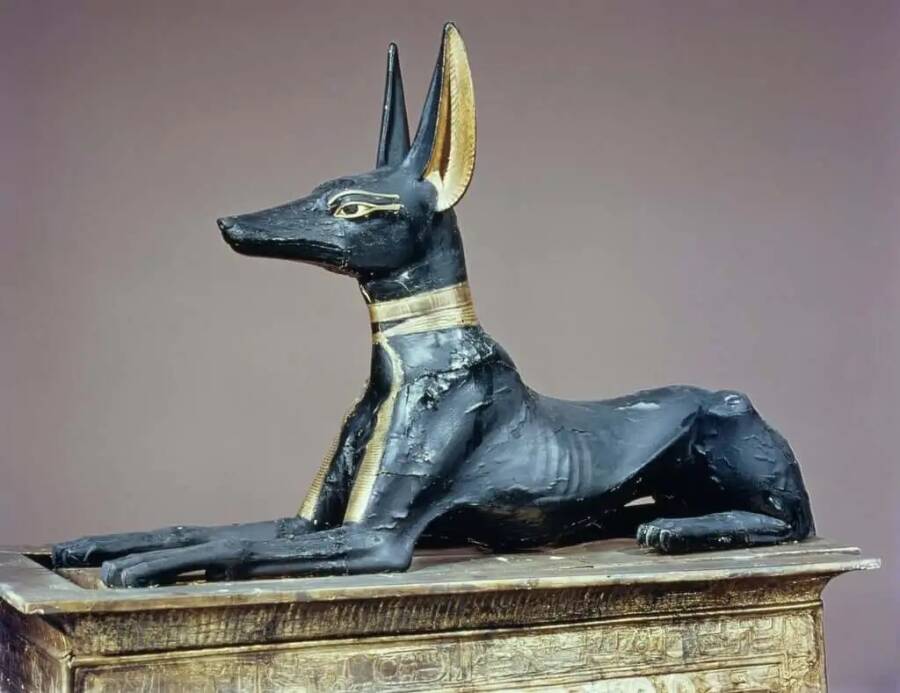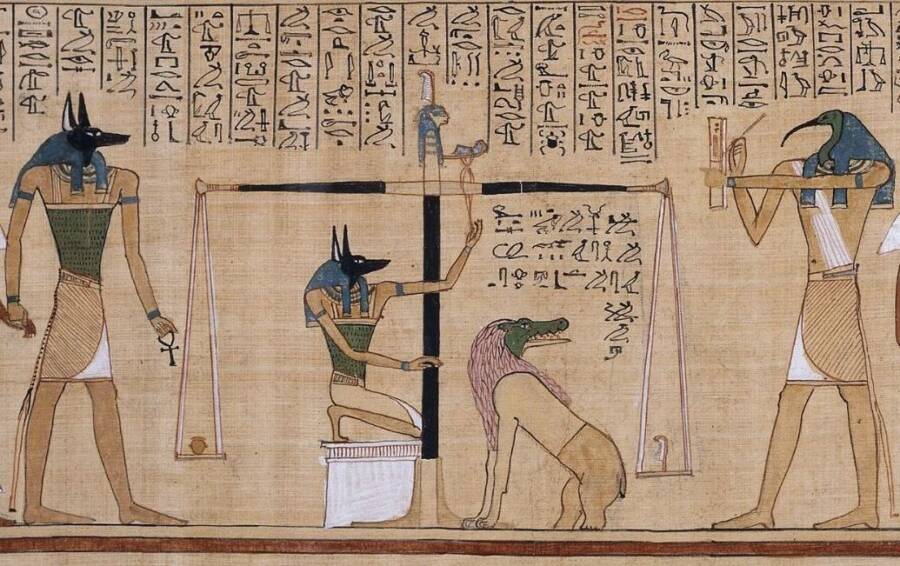Anubis, The Fascinating Egyptian Jackal Death God

Egypt MuseumAn Anubis shrine.
The role of the Egyptian deity Anubis changed over the centuries. But this ink-black jackal god was always associated with death and dying.
Anubis was originally a god of the underworld, tasked with helping guide the dead. In some myths, Anubis led spirits to the “Hall of Two Truths,” where their hearts were weighed against a feather belonging to the deity Ma’at. If their heart weighed more than the feather, the organ would be devoured, erasing the deceased’s spirit from existence. If the heart weighed the same, Anubis led the spirit into the afterlife.
As the political and religious landscape in Egypt changed, so did Anubis’ role. He became increasingly associated with cemeteries and preparing the dead for burial. Priests sometimes wore Anubis masks during mummification, and tombs in the Valley of the Kings often incorporated imagery of Anubis.

British MuseumA depiction of the weighing of a human heart against Ma’at’s feather. Anubis was tasked with guiding spirits to this weigh-in and escorting the innocent into the afterlife.
Anubis himself was most frequently depicted as a black jackal. Black, the color of the rich, fertile soil of the Nile, was thought to represent good fortune and rebirth. Jackals, on the other hand, were known to roam around cemeteries and feed on decomposing bodies, so it’s possible that Anubis was made a jackal to protect the dead from desecration.
He is sometimes called “tpy-djuf” or “he who is on his mountain,” a reference to how Anubis guards the Valley of Kings. In that way, the myth of Anubis bore some similarity to Cerberus — the fearsome dog who served Hades, the Greek god of death.





